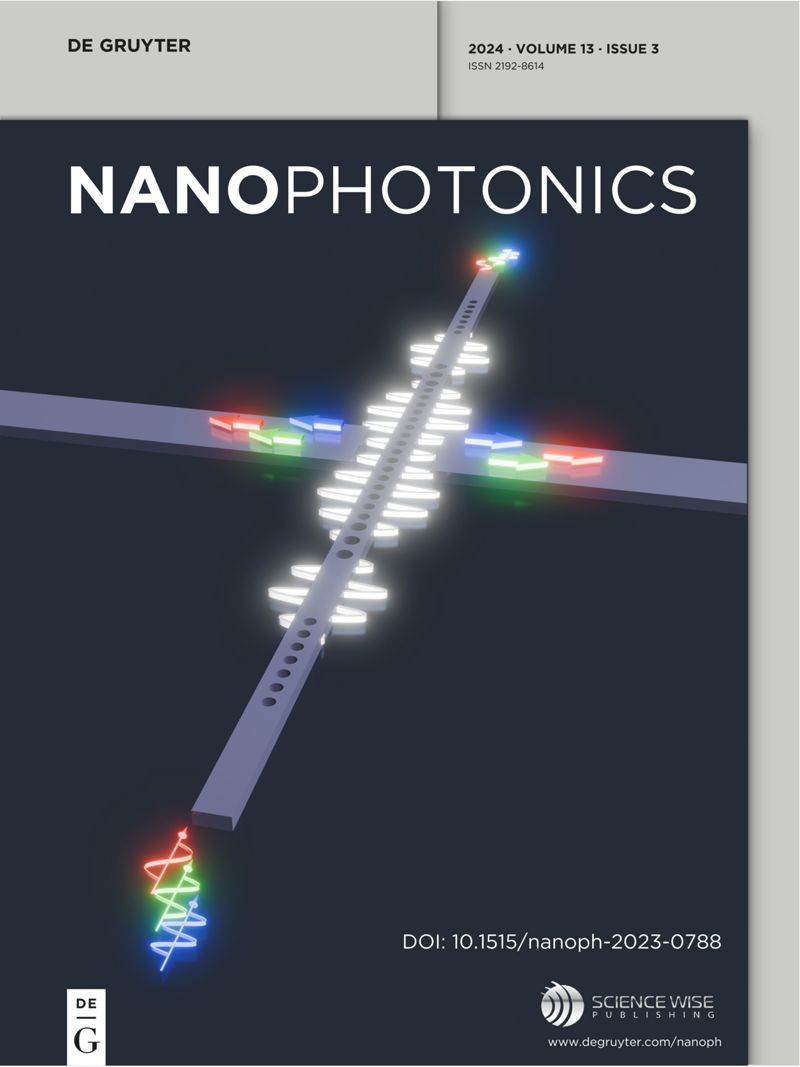High performance mode (de)multiplexer assisted with a microring resonator on the lithium niobate-on-insulator platform
IF 6.6
2区 物理与天体物理
Q1 MATERIALS SCIENCE, MULTIDISCIPLINARY
引用次数: 0
Abstract
The high extinction ratio mode (de)multiplexer is a pivotal component in high capacity mode-division multiplexing data communication and nascent on-chip intermodal acousto-optic modulators. Up to now, high performance on-chip mode (de)multiplexers are still lacking for integrated AOMs on the lithium niobate-on-insulator platform. In this paper, we propose and demonstrate an innovative scheme to achieve high extinction ratio signal routing for acousto-optic modulation, by leveraging a two-mode (de)multiplexer in conjunction with a high-在绝缘体上铌酸锂平台上的微环谐振器辅助下的高性能模式(de)多路复用器
高消光比模复用器是高容量模分复用数据通信和新兴片上多模声光调制器的关键部件。到目前为止,在绝缘体上铌酸锂平台上集成的AOMs仍然缺乏高性能的片上模式(de)多路复用器。在本文中,我们提出并演示了一种创新方案,通过利用双模(解)多路复用器与高q赛道微环谐振器相结合,实现声光调制的高消光比信号路由。该集成器件采用一步电子束光刻和干蚀刻工艺制备。所演示的双模(de)多路复用器在1514 - 1580 nm波长范围内具有低于- 20 dB的出色模间串扰和小于1.92 dB的片上插入损耗。随着微环谐振器滤波器的加强,载波信号被彻底抑制,测量消光比达到30 dB以上。我们的原理验证研究提供了一种可行且紧凑的解决方案,可以在光子和量子信息处理、微波光子学和激光雷达的LNOI中实现实际的多模态AOMs。
本文章由计算机程序翻译,如有差异,请以英文原文为准。
求助全文
约1分钟内获得全文
求助全文
来源期刊

Nanophotonics
NANOSCIENCE & NANOTECHNOLOGY-MATERIALS SCIENCE, MULTIDISCIPLINARY
CiteScore
13.50
自引率
6.70%
发文量
358
审稿时长
7 weeks
期刊介绍:
Nanophotonics, published in collaboration with Sciencewise, is a prestigious journal that showcases recent international research results, notable advancements in the field, and innovative applications. It is regarded as one of the leading publications in the realm of nanophotonics and encompasses a range of article types including research articles, selectively invited reviews, letters, and perspectives.
The journal specifically delves into the study of photon interaction with nano-structures, such as carbon nano-tubes, nano metal particles, nano crystals, semiconductor nano dots, photonic crystals, tissue, and DNA. It offers comprehensive coverage of the most up-to-date discoveries, making it an essential resource for physicists, engineers, and material scientists.
 求助内容:
求助内容: 应助结果提醒方式:
应助结果提醒方式:


